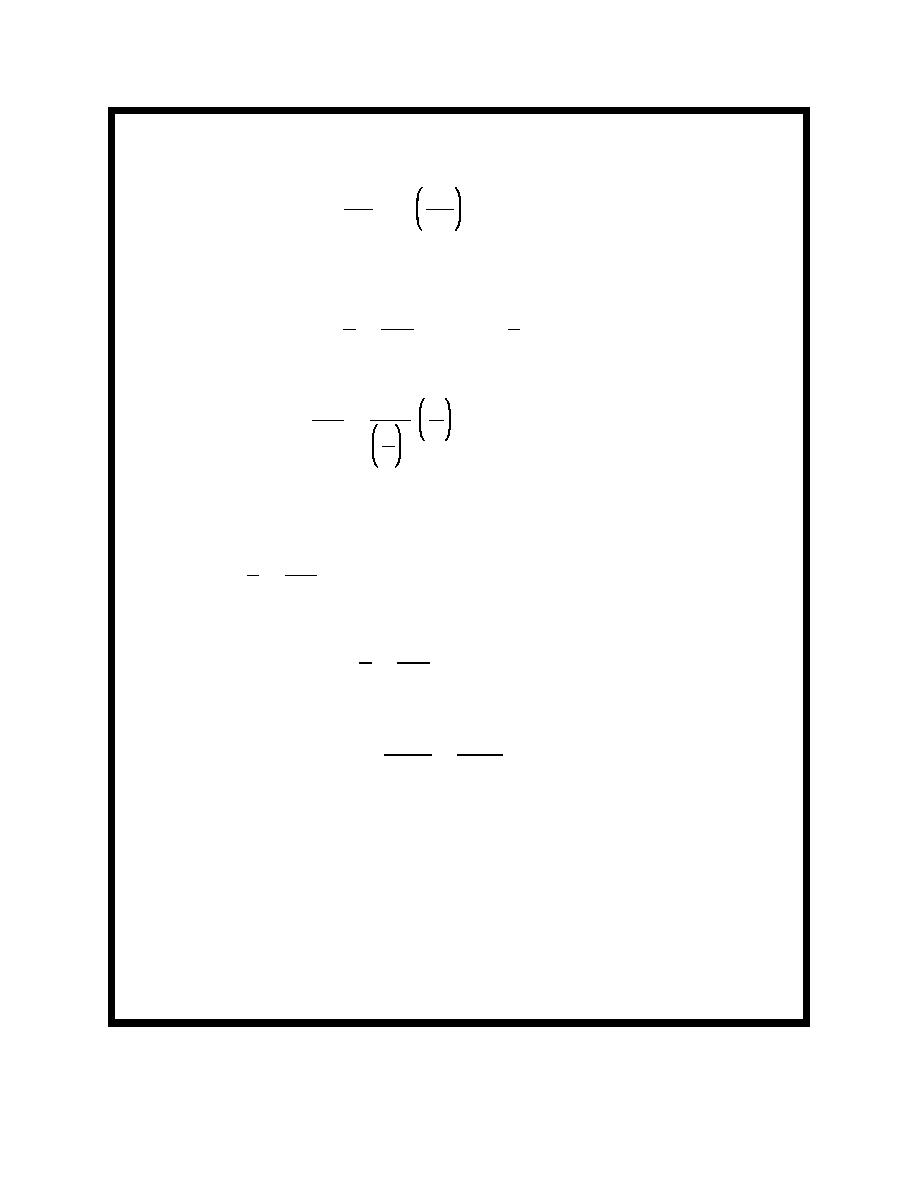
EM 1110-2-1100 (Part II)
30 Apr 02
Example Problem II-1-5 (Continued)
which gives L = 88.5 m (290.3 ft). The wavelength from the linear (Airy) theory is
gT 2
2πd
tanh
' 80.6 m (264.5 ft)
L'
2π
L
To check whether the wave conditions are in the range for which cnoidal wave theory is valid, calculate d/L
and the Ursell number = L2H/d3:
d
3
1
' 0.0339 <
0.K.
'
L
88.5
8
L 2H
1
H
' 290 > 26
0.K.
'
d
3
2
d
d
L
Therefore, cnoidal theory is applicable.
(b) Wave celerity is given by
L
88.5
C'
' 5.90 m/s (19.36 ft/s)
'
T
15
while the linear theory predicts
L
80.6
' 5.37 m/s (17.63 ft/s)
C'
'
T
15
Thus, if it is assumed that the wave period is the same for cnoidal and Airy theories, then
Ccnoidal
Lcnoidal
.1
'
CAiry
LAiry
(c) The percentage of the wave height above the SWL may be determined from Figure II-1-11 or II-1-12.
Entering these figures with L2H/D3 = 290, the value of (yc -d)/H is found to be 0.865, or 86.5 percent.
Therefore,
yc ' 0.865 H % d
yc ' 0.865(1) % 3 ' 0.865 % 3 ' 3.865 m (12.68 ft)
Example Problem II-1-5 (Continued)
II-1-46
Water Wave Mechanics


 Previous Page
Previous Page
